Dubai is an impressive sight already from the air before landing at one of the city’s airports. Along the water and in other neighborhoods of the city, skyscrapers stand in contrast to the flat desert landscape surrounding the modern and rapidly expanding city, the largest in the United Arab Emirates.
The top of Dubai is literally up in the clouds with Burj Khalifa’s almost 830 meters/2,725 feet in height. The high-rise was completed in 2010 as the world’s tallest, and Dubai has in several other ways marked itself with the first, largest and most impressive things in different fields.
Dubai is the city of contrasts, where the modern city almost totally overshadows the Dubai, which was known before the country’s oil revenues enabled the growth, which the city has experienced in recent decades. However, there are also low and densely built neighborhoods where you meet the otherwise historic Dubai.
In Dubai, you can go to museums and take a closer look at the city’s history and the union formation that led to the founding of the United Arab Emirates in 1971. You can also go to theme parks, take a swim at a beach or enjoy an indoor ski trip.
There are also great excursions to make from Dubai, which is one of the country’s seven emirates. After a few minutes drive from Dubai city center, you find the city and emirate Sharjah. And after a 90 minute drive you are in the capital Abu Dhabi. You can also take a drive through the desert to the oasis town of Al Ain.

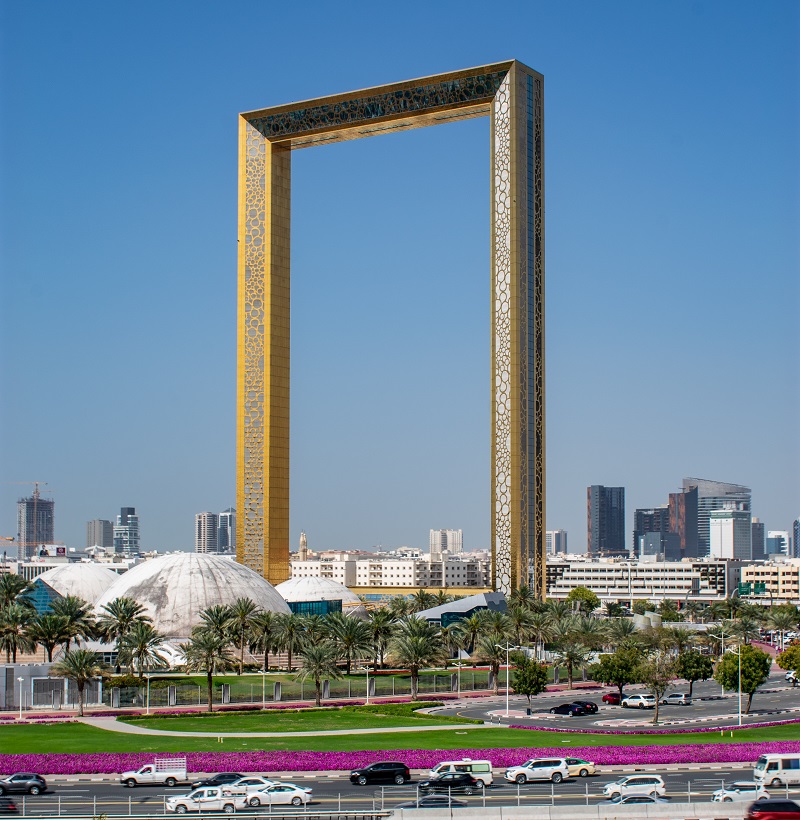



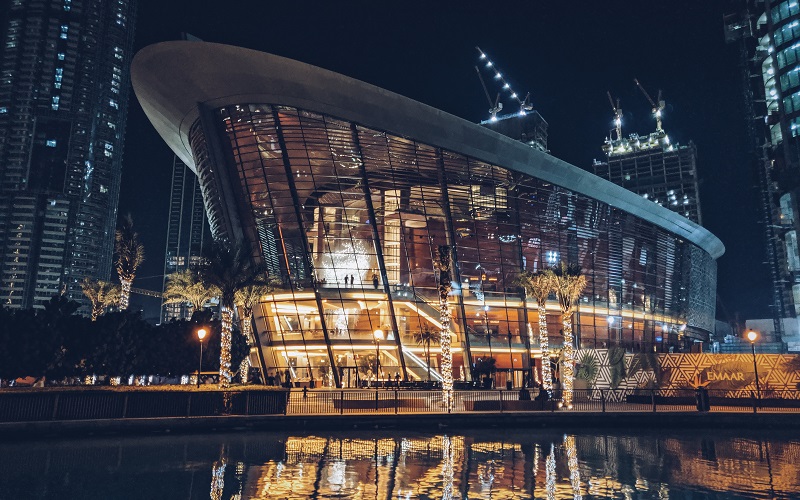

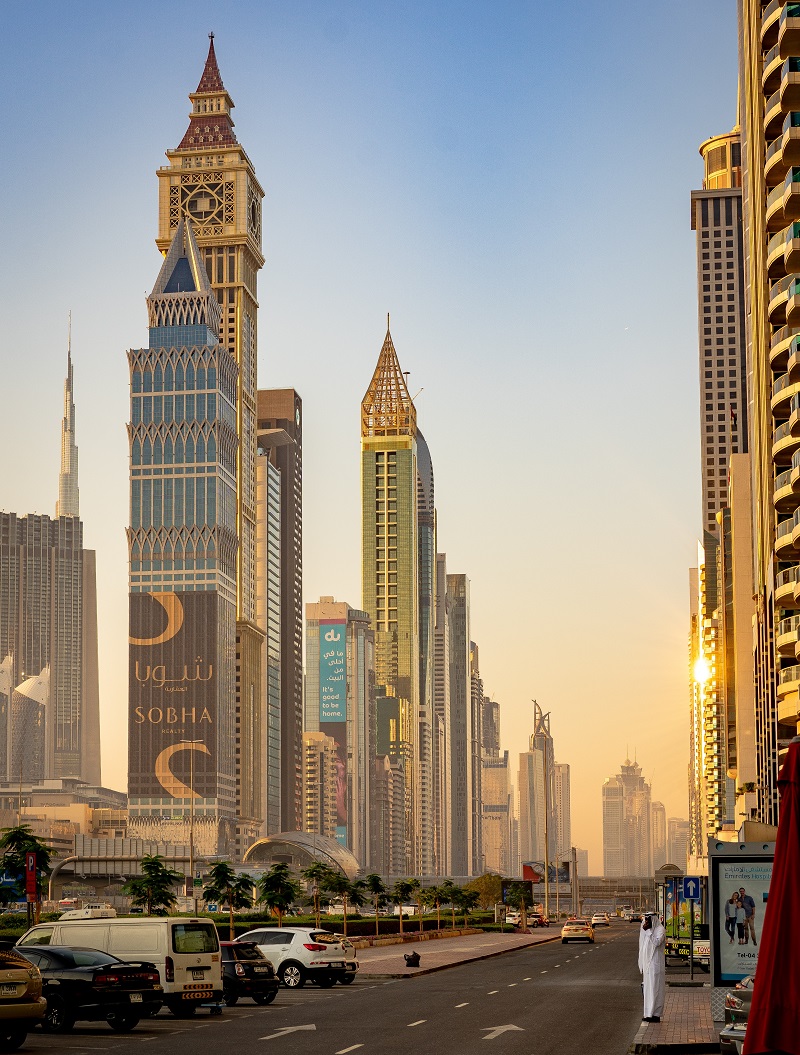
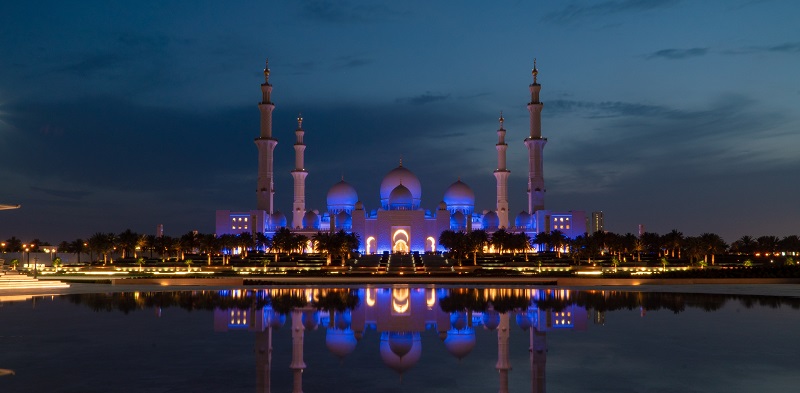
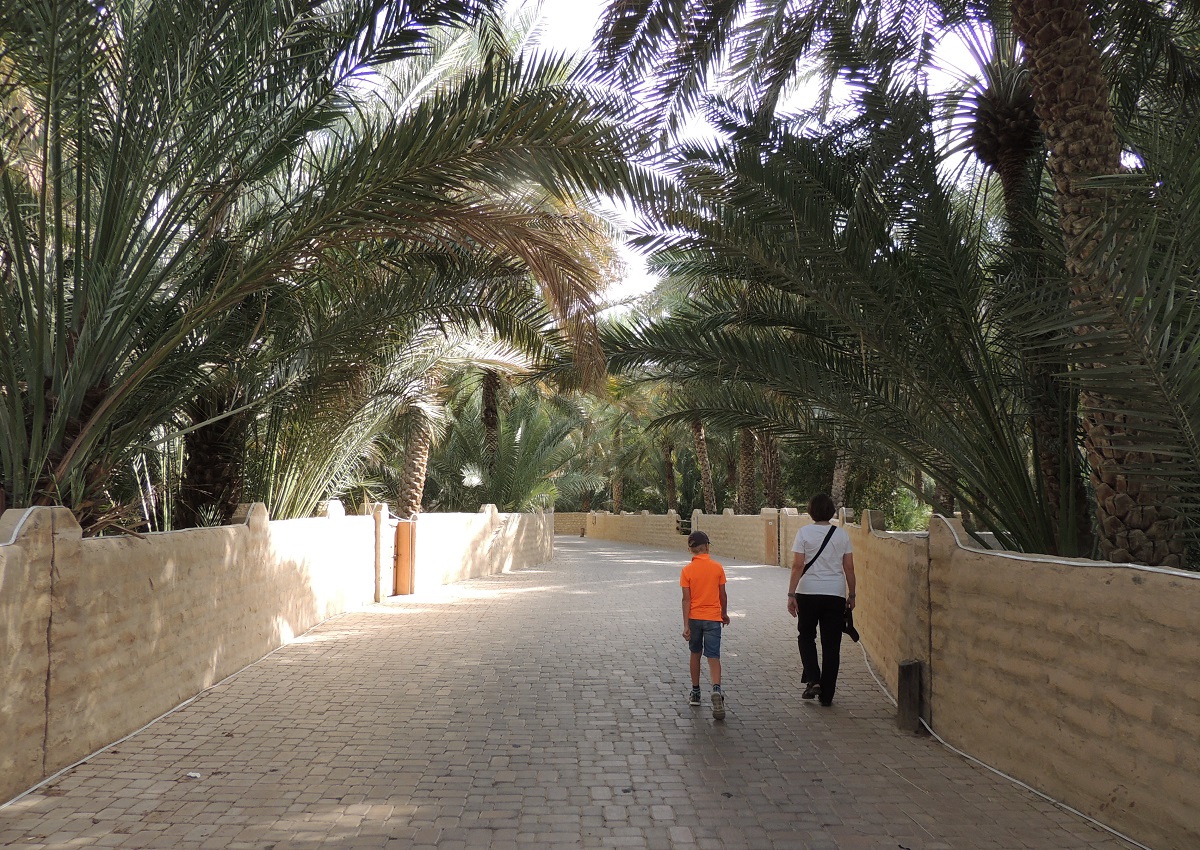
Dubai is founded
At the beginning of the 19th century, the Al Abu Falasa family established Dubai, and the new settlement was subjugated to Abu Dhabi to the southwest. This dependency lasted until 1833, but before then the area leaders signed the so-called General Maritime Peace Treaty. This happened to the United Kingdom government in 1820, and the goal was to stop the extensive piracy that was going on in the waters around the Arabian Peninsula.
Dubai’s independence in 1833 came about when Maktoum bin Butti took over the city from the Abu Falasa family. Maktoum bin Butti thereby founded the Al Maktoum dynasty, which continues to rule Dubai. In 1841, an extensive smallpox epidemic broke out in Dubai, causing the city to be moved east to the Deira neighborhood. From here, the city grew as the commercial city that is Dubai’s trademark to this day.
British Protectorate
Despite the agreement with the British in 1820, the waters around the Arabian Peninsula during the 19th century were still ravaged by an extensive piracy that took place against, not least, ships between Europe and Asia. Britain had great and valuable interests to protect with the colony of India and the traffic between Indian and British ports.
To counter the ravages of pirates, the United Kingdom signed a series of treaties with leaders of Arab states along the Persian Gulf, thus making the region including Dubai a British sphere of interest as a protectorate of 1892. It managed to minimize pirates’ attacks and thereby protect their sailing.
Two years after the agreement with the British, sheik Maktoum gave tax exemption to all foreign merchants, and it boosted Dubai’s growth. In 1903, the city became the site of a British steamship line, and more and more merchants settled here. A significant part of the trade consisted of pearls that were a lucrative source of income until the 1920s, when Japanese art pearls and later the depression in 1929 led to a decline for this industry.
Tough Economic Years
Since the 19th century, pearl trade has provided Dubai with great revenue and has been one of the reasons for the city’s development. In the 1920s this trade went down significantly, and then came the aftermath of the 1930 depression. It gave Dubai’s otherwise such skilled merchants severe conditions, and they worsened with the outbreak of World War II, with many trade relations disappearing or becoming more difficult.
The region and Dubai were characterized by poverty in the 1930s, which gave rise to political uprisings, which, among other things, took root in the former pearl traders seeking improved economic opportunities. However, the rebel movements were not successful and sheik Saeed bin Maktoum bin Hasher Al Maktoum, who had ruled since 1912, could continue to lead Dubai. Better times were to come, but before that, Dubai also got into a fight with neighbor Abu Dhabi over borders. A minor war broke out in 1947 between the two emirates, and Britain entered the conflict, creating a buffer zone and a ceasefire,
Oil and Gold Changing City
Sheik Saeed bin Maktoum sat in power until his death in 1958, there was a time when much new was on the way in Dubai. The late 1950s were when the oil was found in the Arab Emirates and over the years the oil generated unprecedented revenue for the area.
Sheik Rashid bin Saeed Al Maktoum joined in 1958, and has initiated Dubai’s vigorous expansion. In 1963, Dubai Creek was excavated as a port, with a significant increase in traffic laying the groundwork for the city’s, in time, very large gold exports. It’s a trade Dubai has become famous for, and the city’s famous gold souk developed.
Abu Dhabi had already found more oil earlier than when the valuable and sought-after commodity was found in Dubai in 1966. That same year, Dubai and Qatar established the currency riyal as a replacement for the then local edition of the Indian rupee affected by devaluation. The first oil was exported from Dubai in 1969, and then the state’s economy boomed.
The independent United Arab Emirates
Oil was produced in Abu Dhabi from the early 1960s and in Dubai later in the same decade. The events were instrumental in the leaders of the emirates along the southern Persian Gulf discussing a union. Sheik Zayed bin Sultan al Nahyan became leader of the Emirate of Abu Dhabi in 1966, and he became a driving force in the following years of association with the United Arab Emirates, with Dubai being the second leading state.
In the mid-1960s, the seven so-called Treaty heirs, Bahrain and Qatar were under British patronage, giving the small states political and military protection. In 1966, a debate began in the British government and the lower house that Britain could no longer protect the protectorates along the Persian Gulf. The British economy and other tasks of the British military around the world were reasons for the debate. It ended in 1968 with a declaration that Britain would withdraw from the states.
Sheik Zayed bin Sultan al Nahyan offered to pay all costs for the British military presence in the Emirates, but this was refused. Instead, the nine British protectorates sought to form a federation, which was first proposed in February 1968 following a meeting between the leaders of Abu Dhabi and Dubai. The two states had agreed on the framework for a union and the other Gulf states were invited to join the federation. All nine states initially agreed to a union, but due to political and practical disagreements, Bahrain became independent in August 1971, and Qatar followed Bahrain as an independent nation the following month.
The agreement with Britain expired on December 1, 1971, and from that date the seven emirates were independent states. Ajman, Fujairah, Sharjah and Umm Al Quwain immediately decided to join Abu Dhabi and Dubai, and Ras al-Khaimah became part of the union in early 1972. Abu Dhabi was the capital of the new country and Abu Dhabi leader became President of the Union State. Abu Dhabi and Dubai were the most important emirates in the new country, and as part of the Union agreement, the two emirates were given the sole veto power in matters of national importance.
In 1973, Dubai’s riyal was replaced by dirham as a single currency in the United Arab Emirates and outstanding from the 1947 Dubai-Abu Dhabi war was also resolved. However, it should take until 1979 before the border dispute between the two Emirates was formally concluded by agreement on an agreement.
Dubai’s colossal growth to the present
In Dubai, significant investments have been made in recent decades in infrastructure expansion, building a tourism sector and establishing a large foreign labor market. The entire expansion was made possible by Dubai’s oil revenues, but over time the new initiatives have created new sources of revenue as an alternative to the oil.
The Gulf War of 1990 created uncertainty about the economy of the region, but already a few years later, many international companies established themselves in Dubai. Rise in oil prices gave Dubai sharply increased revenues and expanded rapidly. New neighborhoods, highways and airports are just some of what has been invested in.
Dubai’s expansion has also created world-famous landmarks for the city. The Burj al Arab hotel, the world’s tallest building, Burj Khalifa, and the new waterfront districts, The Palm and The World, have repeatedly put Dubai at the top of the agenda for amazing construction projects and experiences.
However, the Dubai economy proved vulnerable as the global economy went into recession in many places in the late 00s. The new dependence on tourism and construction caused a severe setback for Dubai’s economy, but precisely the new parts of the economy are also expected to make Dubai strong enough to move forward when the oil is expected to run out in the late 2020s.

Overview of Dubai
Dubai is an impressive sight already from the air before landing at one of the city’s airports. Along the water and in other neighborhoods of the city, skyscrapers stand in contrast to the flat desert landscape surrounding the modern and rapidly expanding city, the largest in the United Arab Emirates.
The top of Dubai is literally up in the clouds with Burj Khalifa’s almost 830 meters/2,725 feet in height. The high-rise was completed in 2010 as the world’s tallest, and Dubai has in several other ways marked itself with the first, largest and most impressive things in different fields.
About the upcoming Dubai travel guide
About the travel guide
The Dubai travel guide gives you an overview of the sights and activities of the Arab city. Read about top sights and other sights, and get a tour guide with tour suggestions and detailed descriptions of all the city’s most important churches, monuments, mansions, museums, etc.
Dubai is waiting for you, and at vamados.com you can also find cheap flights and great deals on hotels for your trip. You just select your travel dates and then you get flight and accommodation suggestions in and around the city.
Read more about Dubai and United Arab Emirates
Buy the travel guide
Click the “Add to Cart” button to purchase the travel guide. After that you will come to the payment, where you enter the purchase and payment information. Upon payment of the travel guide, you will immediately receive a receipt with a link to download your purchase. You can download the travel guide immediately or use the download link in the email later.
Use the travel guide
When you buy the travel guide to Dubai you get the book online so you can have it on your phone, tablet or computer – and of course you can choose to print it. Use the maps and tour suggestions and you will have a good and content-rich journey.
Burj Khalifa • Gold Souk • Fine Museums • Sunshine & Beaches

Overview of Dubai
Dubai is an impressive sight already from the air before landing at one of the city’s airports. Along the water and in other neighborhoods of the city, skyscrapers stand in contrast to the flat desert landscape surrounding the modern and rapidly expanding city, the largest in the United Arab Emirates.
The top of Dubai is literally up in the clouds with Burj Khalifa’s almost 830 meters/2,725 feet in height. The high-rise was completed in 2010 as the world’s tallest, and Dubai has in several other ways marked itself with the first, largest and most impressive things in different fields.
About the upcoming Dubai travel guide
About the travel guide
The Dubai travel guide gives you an overview of the sights and activities of the Arab city. Read about top sights and other sights, and get a tour guide with tour suggestions and detailed descriptions of all the city’s most important churches, monuments, mansions, museums, etc.
Dubai is waiting for you, and at vamados.com you can also find cheap flights and great deals on hotels for your trip. You just select your travel dates and then you get flight and accommodation suggestions in and around the city.
Read more about Dubai and United Arab Emirates
Buy the travel guide
Click the “Add to Cart” button to purchase the travel guide. After that you will come to the payment, where you enter the purchase and payment information. Upon payment of the travel guide, you will immediately receive a receipt with a link to download your purchase. You can download the travel guide immediately or use the download link in the email later.
Use the travel guide
When you buy the travel guide to Dubai you get the book online so you can have it on your phone, tablet or computer – and of course you can choose to print it. Use the maps and tour suggestions and you will have a good and content-rich journey.





Similar to Dubai Travel Guide
There are no listings matching your search.
Reset